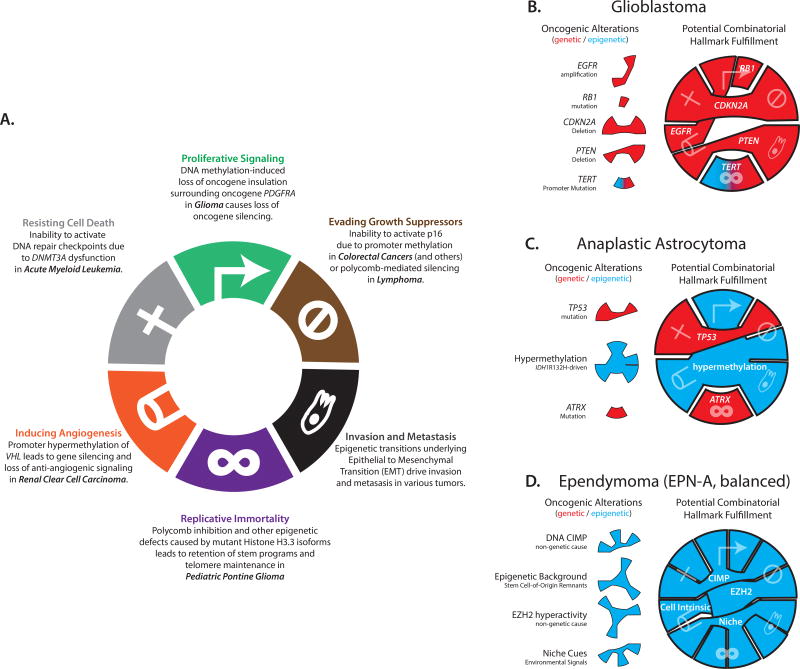
Genes encoding chromatin regulators are frequently mutated in human cancer. In specific cases, these alterations appear to be major drivers of the malignant state. In addition, although cancer is typically thought of as a genetic disease, the importance of epigenetic aberrations and epigenetic deregulation is becoming increasingly clear through a convergence of findings, in addition to chromatin regulator mutations, these include: aberrant epigenetic landscapes, aberrant developmental hierarchies within tumors, and the efficacy of epigenetic therapies.
Ongoing studies in the lab apply our epigenomic technologies to characterize the transcriptional and epigenetic landscapes of cancer cells and seek to identify mechanisms by which epigenetic changes contribute to therapeutic resistance.
People
- Sarah Shareef
- Will Flavahan, PhD
- Volker Hovestadt, PhD
- Jingyi Wu, PhD
- Christine Eyler, MD, PhD
- Gabriel Griffin, MD
Publications
Want to know more about this aspect of the lab? We recommend starting with the papers below
Chromatin and associated epigenetic mechanisms stabilize gene expression and cellular states while also facilitating appropriate responses to developmental or environmental cues. Genetic, environmental, or metabolic insults can induce overly restrictive or overly permissive epigenetic landscapes that contribute to pathogenesis of cancer and other diseases. Restrictive chromatin states may prevent appropriate induction of tumor suppressor programs …
Continued
Glioblastoma, the most common and aggressive malignant brain tumor, is propagated by stem-like cancer cells refractory to existing therapies. Understanding the molecular mechanisms that control glioblastoma stem cell (GSC) proliferation and drug resistance may reveal opportunities for therapeutic interventions. Here we show that GSCs can reversibly transition to a slow-cycling, persistent state in response to …
Continued
Gain-of-function IDH mutations are initiating events that define major clinical and prognostic classes of gliomas. Mutant IDH protein produces a new onco-metabolite, 2-hydroxyglutarate, which interferes with iron-dependent hydroxylases, including the TET family of 5′-methylcytosine hydroxylases. TET enzymes catalyse a key step in the removal of DNA methylation. IDH mutant gliomas thus manifest a CpG island …
Continued
The diverse malignant, stromal, and immune cells in tumors affect growth, metastasis, and response to therapy. We profiled transcriptomes of ∼6,000 single cells from 18 head and neck squamous cell carcinoma (HNSCC) patients, including five matched pairs of primary tumors and lymph node metastases. Stromal and immune cells had consistent expression programs across patients. Conversely, …
Continued
Human cancers are complex ecosystems composed of cells with distinct phenotypes, genotypes, and epigenetic states, but current models do not adequately reflect tumor composition in patients. We used single-cell RNA sequencing (RNA-seq) to profile 430 cells from five primary glioblastomas, which we found to be inherently variable in their expression of diverse transcriptional programs related …
Continued
Gliomas with histone H3 lysine27-to-methionine mutations (H3K27M-glioma) arise primarily in the midline of the central nervous system of young children, suggesting a cooperation between genetics and cellular context in tumorigenesis. Although the genetics of H3K27M-glioma are well characterized, their cellular architecture remains uncharted. We performed single-cell RNA sequencing in 3321 cells from six primary H3K27M-glioma …
Continued

